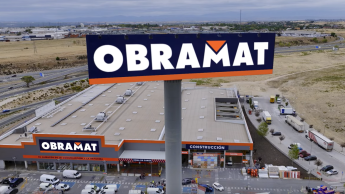

deep insights, facts & figures

Not just since the Global Summit in Rome has it been clear that the industry is moving towards an omni-channel world. The question now is whether all the established players will actually make the entire distance
“From e-commerce to multi-channel to omni-channel: the retail journey in the home improvement sector” is the heading of a study fleshed out by MDJ², a British management consultancy. The subject could not be more topical. When DIY retailers and suppliers from all over the world met this summer at the 2nd Global DIY Summit in Rome, there was one major topic dominating the conference: how can the industry, which has built up its permanent stationary structures over five decades, meet the challenge of e-commerce, which has got what it takes to make just such structures of entire industries obsolete? The report is a most comprehensive inventory of the current situation of the e-commerce activities of mainly British and American DIY retailers, and it frequently looks beyond that particular field as well. It brings together a plethora of facts and examples that shed light on the different starting scenarios and strategies of the market participants. The report differentiates between two groups of retailers. On the one side are the big boxes such as B&Q, Homebase and Home Depot, and on the other are the smaller formats like Screwfix and Toolstation –which are finding it easier to orientate their existing static business model to the online version. To take just one example: Screwfix, a Kingfisher sales channel, makes nearly two-thirds of its sales in its static business and one-third online. By contrast, Homebase achieves an online share of no more than five per cent – though this is growing rapidly, most recently at an annual increase of 25 per cent. Altogether the study sees the position of the currently established DIY retailers as definitely critical. The big-box operators are finding it more difficult to adapt flexibly to the new online world than the smaller formats. Above all they have high fixed costs resulting from too many stores that are too big; not for nothing are several of them announcing a “rightsizing” effort. This is a problem facing B&Q, for instance, one that Kingfisher CEO Ian Cheshire addressed openly during his lecture in Rome – and it means that the company is going to have to change its thinking within a very few years. After all, no more than a decade ago the thinking was totally different: between 2000 and 2006 Kingfisher’s B&Q doubled its sales area by increasing the number of big-box Warehouses from 48 to 114. The structures of such companies that have developed over many years are not designed for omni-channel business…
Related articles
Read also

 Menü
Menü












 Newsletter
Newsletter